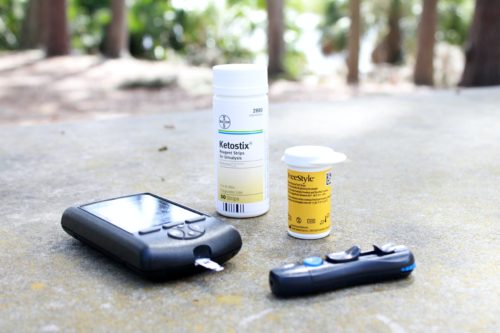How Value-Based Purchasing Reduces Readmissions and Improves Patient Retention
In recent years, healthcare systems across the United States and globally have been transitioning from a fee-for-service model to a value-based purchasing (VBP) model. The shift to VBP is designed to improve the quality of care, reduce unnecessary costs, and promote healthier outcomes for patients. A major focus of this transition, particularly in home healthcare, has been the reduction of hospital readmissions and the improvement of patient retention. Value-based purchasing encourages healthcare providers to enhance care delivery while simultaneously addressing the needs of patients in a holistic manner. This blog will explore how VBP strategies—such as better communication, monitoring, follow-up care, and preventative practices—are key in reducing readmissions and improving patient retention, specifically in the context of home health care.
Understanding Value-Based Purchasing (VBP)
Value-based purchasing is a healthcare management strategy that ties reimbursement rates and incentives to the quality of care provided, rather than the quantity of services delivered. In a traditional fee-for-service model, healthcare providers are reimbursed for each service they render, creating incentives for providers to increase the number of treatments, tests, or procedures. In contrast, value-based purchasing rewards providers who achieve better patient outcomes, lower costs, and higher patient satisfaction.
The shift towards VBP has far-reaching implications, especially in the realm of home healthcare. When home health agencies are incentivized to improve quality of care and reduce hospital readmissions, they must focus on delivering more proactive, patient-centered care. In particular, these agencies need to develop strategies for improving communication, continuous monitoring, and ensuring patients have appropriate follow-up care, which all contribute to reducing unnecessary hospital readmissions.
Reducing Readmissions through Better Communication
One of the most crucial elements of value-based purchasing in home healthcare is enhancing communication. Hospital readmissions are often the result of poor communication between healthcare providers, patients, and family members. A lack of understanding about the patient’s health condition or instructions for post-discharge care can lead to complications that require readmission. In a VBP system, healthcare providers focus on creating a seamless communication strategy to prevent this.
Effective Communication with Patients and Families
For home health providers, the primary goal is to ensure that patients and their families are fully educated about the patient’s condition, recovery process, and the steps required to manage the condition at home. This involves clearly explaining medication regimens, physical therapy exercises, signs of potential complications, and when to seek medical attention.
One of the most effective ways to achieve better communication is through regular check-ins with patients. Home healthcare providers can schedule frequent phone calls, video visits, or in-person visits to review the patient’s progress, address any concerns, and reinforce educational materials. Additionally, ensuring that family members are involved in these discussions can improve care coordination and reduce the chances of readmissions due to confusion or misunderstanding about care instructions.
Communication Among Healthcare Providers
Improved communication is not only critical between home healthcare providers and patients but also between different providers in the patient’s care network. Many patients with chronic conditions or complex health needs receive care from multiple healthcare providers, including specialists, hospitals, and primary care doctors. By implementing communication strategies such as shared electronic health records (EHRs) and patient care coordination systems, home healthcare agencies can ensure all providers are on the same page regarding a patient’s status and needs.
When different providers are aligned in their care plans, there is a much lower risk of complications and unnecessary readmissions. For instance, if a patient is discharged from the hospital with a specific care plan, the home healthcare team can quickly pick up where the hospital left off, ensuring there is no disruption in care.
Monitoring to Prevent Complications
Another key strategy in reducing hospital readmissions is consistent monitoring. In a traditional healthcare model, many patients are discharged from the hospital without adequate follow-up or monitoring, which can lead to worsening conditions or undetected complications. In contrast, the VBP model emphasizes the importance of ongoing monitoring, particularly in home health.
Remote Patient Monitoring
One of the most effective tools for reducing readmissions is remote patient monitoring (RPM). Through the use of wearable devices, sensors, and other digital tools, home healthcare providers can remotely monitor a patient’s vital signs, such as blood pressure, heart rate, glucose levels, and oxygen saturation. RPM enables providers to detect any concerning trends or changes in the patient’s condition early on, before they become serious enough to require hospitalization.
For example, if a patient with congestive heart failure starts to show signs of fluid retention (a potential indicator of worsening heart failure), the home health team can intervene with appropriate treatments, such as adjusting medication or recommending lifestyle changes. By catching these issues early, healthcare providers can prevent the need for an emergency room visit or readmission to the hospital.
Personalized Monitoring Plans
In addition to general monitoring, personalized monitoring plans based on each patient’s specific needs can be an effective strategy for reducing readmissions. Patients with multiple chronic conditions may require tailored monitoring for each of their health issues. For instance, a patient with diabetes and chronic obstructive pulmonary disease (COPD) may need separate monitoring for both blood sugar levels and lung function. Home healthcare providers can create individualized monitoring protocols to ensure the patient’s needs are addressed comprehensively.
By utilizing this personalized approach, patients receive more focused care, which reduces the chances of their conditions worsening and leading to readmission.
Follow-Up Care to Ensure Continuity of Treatment
Follow-up care plays an integral role in preventing readmissions and improving patient retention. After a patient is discharged from the hospital, the transition back home can be challenging, especially if they don’t have adequate support or resources. This is where follow-up care becomes essential in reducing readmission rates.
Post-Discharge Care Coordination
A crucial component of follow-up care is ensuring there is a well-coordinated plan for the patient once they leave the hospital. Home health agencies can work closely with hospitals, primary care physicians, and specialists to ensure that a patient’s discharge plan is clearly understood and that the necessary home health services are put in place. These services can include regular visits from a nurse, physical therapist, or social worker, as well as check-ins from care coordinators to assess the patient’s progress and address any issues that may arise.
Post-discharge follow-up has been shown to reduce hospital readmissions. Studies have demonstrated that patients who receive a follow-up phone call within 48 hours of discharge are less likely to be readmitted to the hospital. This call provides an opportunity to clarify discharge instructions, answer questions, and make adjustments to the care plan if necessary.
Support for Family Caregivers
Another aspect of follow-up care involves ensuring that family caregivers are equipped to help manage the patient’s recovery at home. Family members often serve as primary caregivers, and their well-being is crucial to the success of the patient’s recovery. Home health agencies can provide training, resources, and emotional support for caregivers, which helps reduce caregiver burnout and improves patient outcomes.
When caregivers feel supported, they are more likely to effectively manage the patient’s care, which reduces the likelihood of complications and hospital readmissions.
Preventative Care in Home Health: The Key to Long-Term Well-Being
Preventative care is at the heart of value-based purchasing models, and its impact on patient retention and readmissions cannot be overstated. The primary goal of preventative care is to detect health problems before they become severe, thereby reducing the need for hospital visits and improving overall health outcomes.
Health Screenings and Early Interventions
In home health, preventative care often involves regular health screenings for conditions such as hypertension, diabetes, and cardiovascular diseases. By identifying risk factors early, home health providers can implement interventions that prevent the development of more serious conditions. For example, if a patient’s blood pressure begins to rise, a nurse might adjust their medication, advise changes to their diet, or refer them to a specialist.
Regular health assessments and screenings help healthcare providers intervene early, which significantly reduces the chances of the patient needing urgent care or hospitalization.
Promoting Healthy Lifestyles
Preventative care also includes promoting healthy lifestyles. Home health agencies can support patients in making healthier choices, such as encouraging them to follow a balanced diet, stay physically active, avoid smoking, and manage stress. This is especially important for patients with chronic conditions like diabetes, obesity, and cardiovascular disease.
By empowering patients to take responsibility for their health, home health providers can significantly reduce the risk of future health complications that may result in hospital readmissions.
Conclusion
Value-based purchasing represents a paradigm shift in the way healthcare is delivered, particularly in home healthcare. By emphasizing quality over quantity, VBP encourages healthcare providers to focus on reducing hospital readmissions, improving patient outcomes, and ensuring better patient retention. Key strategies, such as improving communication, continuous monitoring, follow-up care, and preventative measures, all play critical roles in achieving these goals.
Through the implementation of these strategies, home healthcare providers can create an environment where patients are not only receiving the care they need but are also empowered to take control of their own health. As a result, patients experience fewer readmissions, improved health outcomes, and a greater sense of satisfaction with their care. Ultimately, the VBP model represents a promising path forward in the transformation of healthcare, particularly in home health, where the focus on quality, continuity, and prevention can drive long-term improvements in patient health and satisfaction.
Editor's Pick
Leave A Comment
Related Posts
Transition from OASIS-E to OASIS-E1: Key Changes and Implications for […]
Importance of Clinical Narrative and Nurse Teachings while Documenting Home Health OASIS Assessments
Importance of Clinical Narrative and Nurse Teachings while Documenting Home […]
Navigating the Complexities of Medicare and Medicaid Reimbursement for Home […]
Engaging Your Team Around the IPR: Turning Data into Motivation […]
Engaging Your Team Around the IPR: Turning Data into Motivation […]

